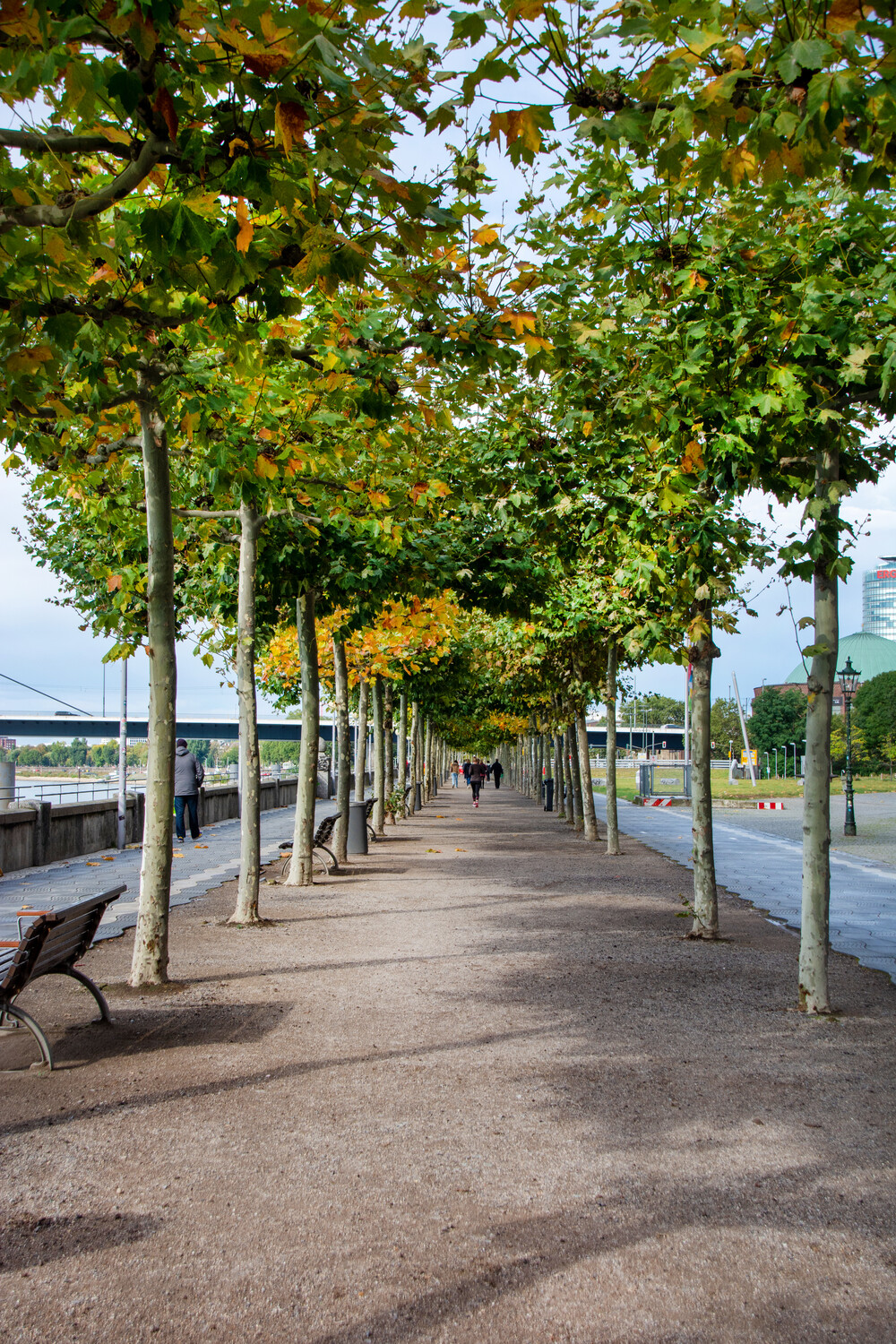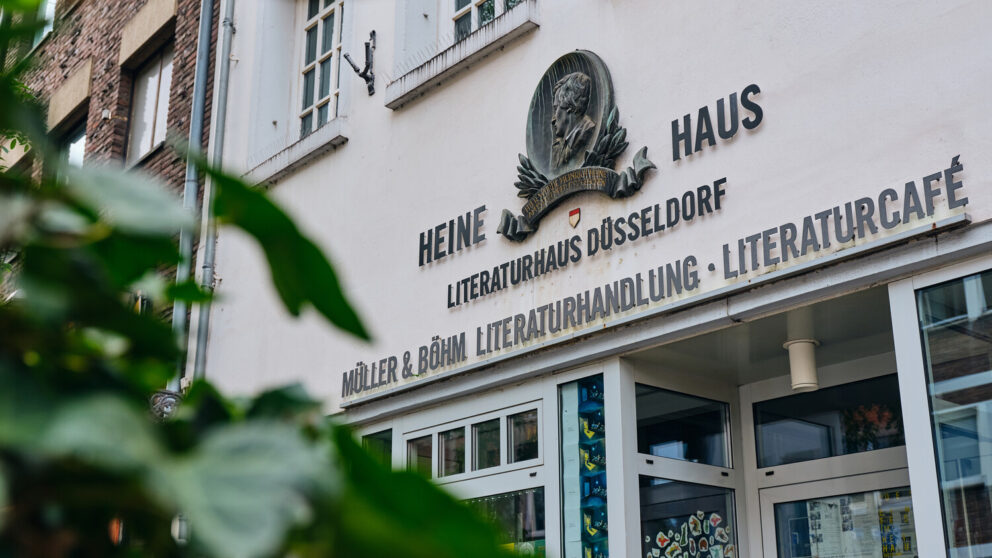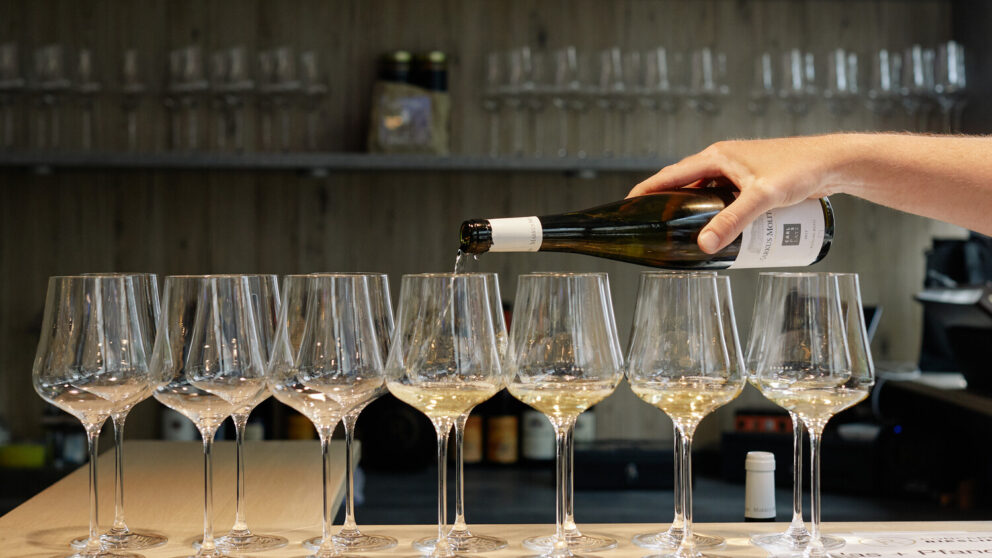
Six special boules courts where winning takes a back seat
Six special boules courts where winning takes a back seat
The hugely popular French game offers the perfect balance of concentration and relaxation
What would you do if you spotted people taking aim at a small pig in the middle of the city? Call the police? Or an animal protection organisation? Certainly if we’re talking about a live animal that is running for its life. Fortunately, in this case the subject is boules. Across many German towns and cities, professional and amateur players armed with three balls can be seen attempting to hit a wooden ‘pig’. Or a plastic one. Known as a ‘cochonnet’, or little pig in French, the target ball is called a jack in English. The story goes that cochonnets were once made from pigs’ bones, which explains the name.
To round off our French lesson before we explore the best boules courts in Düsseldorf, what many people call boules is actually known as pétanque in France. There, boules is used as an umbrella term for a variety of ball games. In clubs, on designated courts and on indoor courts, the professionals call it boules; on open courts, in parks and on grass, it is called pétanque. But whatever you choose to call it, don’t forget to have fun!
Along the Rhine promenade
If after all this talk of pétanque you’re uncertain about how to play boules properly, here are some pointers: stand with your feet together at the head of the court and throw your metal ball from a standing position towards the jack. That’s what it says in the official rules, which you can see applied at the big pétanque competition on the Rhine promenade, for example. Every year, over 1,000 people from around the world flock to Düsseldorf to take part in the Festival de Pétanque, where the competitive action plays out across more than 100 courts on the promenade. Even when there’s no tournament on, you can still watch the players along the embankment near Bäckerstrasse as they throw the balls from a standing or crouched position. You’ll see them at any time of year, and while you’re there, why not embrace the gentle breeze from the river and have a go yourself? How close can you get your ball to the jack at the first try?
On Friedensplätzchen square
Düsseldorf has a population of around 640,000. Take 40,000 away and that gives you the number of officially licensed boules players around the world. Did you know that pétanque is the most widespread game of its kind, with players in 75 countries? On Friedensplätzchen square in the district of Unterbilk, you can chat with experts about the intricacies of a ‘portée’, or high lob, or the right way to ‘shoot’ an opponent’s ball out of the way. Pass the square, just a short walk from buzzing Lorettostrasse, on almost any given day and you’ll see the typical image of a game of boules. The atmosphere is relaxed yet focused as the players throw their steel balls, each weighing around 700 grammes, down one of the two courts. Every now and then, a passer-by will stop to watch the game. People sitting on the surrounding benches might glance up from reading the paper to ask how the game is progressing: has anyone hit the jack yet? Thanks to its straightforward rules and the option of playing singles (tête-à-tête), doubles (doublette) or teams of three (triplette), boules is a fun pastime for young and old alike. And, as you can see on Friedensplätzchen square, it’s a welcome opportunity for people of all generations to meet and spend time together.
In front of the entrance to/in the courtyard of Kunstpalast museum
What do art and boules have in common? Well, a masterful stroke of the brush and the perfect throw both require a high degree of finesse. All fingers should release the ball at the same time when throwing it, and achieving the best possible position requires focus, technique and experience. All under the watchful eye of your fellow players and anybody watching. After a visit to the museum, what better way to exchange views on its artworks than over a game of pétanque? With its sandy ground, the museum’s courtyard provides the perfect terrain. In many ways, boules and art have much in common. But you can see boules become art just a short walk away down Königsallee. Here in Blumengarten stands ‘Die Kugelspielerin’, a 1.36 metre bronze created by Berlin-based sculptor Walter Schott between 1895 and 1897. That makes it only a few years older than the game of boules we know today, which was officially unveiled near Marseilles in 1910. But the roots of the game go all the way back to Roman times.
In Zoopark
One of the many advantages of boules is that it requires little in the way of equipment. Where sports such as skiing, tennis and golf call for one or more pieces of large equipment, all the average boules player needs is a space to play and their small wooden box. Which leaves plenty of room on a bike’s rack or in the back of a car for a small folding table, a bottle or two of wine and a bite to eat. This is all part of the pétanque experience for the players in Zoopark. There’s plenty of space here next to the two designated boules courts at the Faunastrasse entrance to set up any extras, such as folding chairs, to make the game even more enjoyable. Whole afternoons can be spent here honing your game with the views of the nearby lake in the background. By the way, you will notice that the players pick up their boules with a magnetic cord – no bending down required. Quite ingenious!
In Nordpark
You can tell how big boules is globally by the number of luxury brands that produce sets with their logo on it. The French design house Hermès, for example, created a set in a leather case for several hundred euros. But there’s no need to spend that much. Good pétanque balls cost between €50 and €80 and are available in a wide range of patterns, including stripes, crosses and – less common – symbols such as numbers. What is important is that the balls have a hollow centre. This rule was introduced following rare cases in which the constant movement of material in the centre caused some boules to explode on impact! But when it comes to the terrain on which you play, the choice is yours. Nordpark, for example, is a good place to start. Here, not far from the Ballhaus gallery and with the relaxing sound of the fountain in the background, you can enjoy a spot of ‘cross boule’, a version of the game that uses what are essentially hacky sacks. One of the city’s most prestigious boules tournaments used to be held here, but these days it is more likely that the occasional passer-by and ball-chasing dog pays attention to your game. The tournament has now moved to the Rhine promenade, as we mentioned above.
In the boules arena in Heerdt
Worried that bad weather might ruin your game of boules? Fear not! Even when there seems to be no end to a downpour, you can still play your favourite game at the Sur Place boules arena in Heerdt. You can put your skills to the test on one of its 16 courts, even after dark thanks to the floodlights. Now, that is a big plus that many outdoor courts don’t offer. The venue hosts several tournaments, as pétanque enthusiasts across Germany can compete in local leagues and in national and regional championships. That’s when the two rows of eight adjacent courts become a real hive of activity. From the stand, you can cheer on your team or try to pick up a trick or two from the top players. And when the weather finally calls for sun cream and shorts, you can head outside to the ‘boulodrome’ and its 32 courts. Please note that admission is currently restricted to club members due to the pandemic.
Title image: Düsseldorf Tourism




